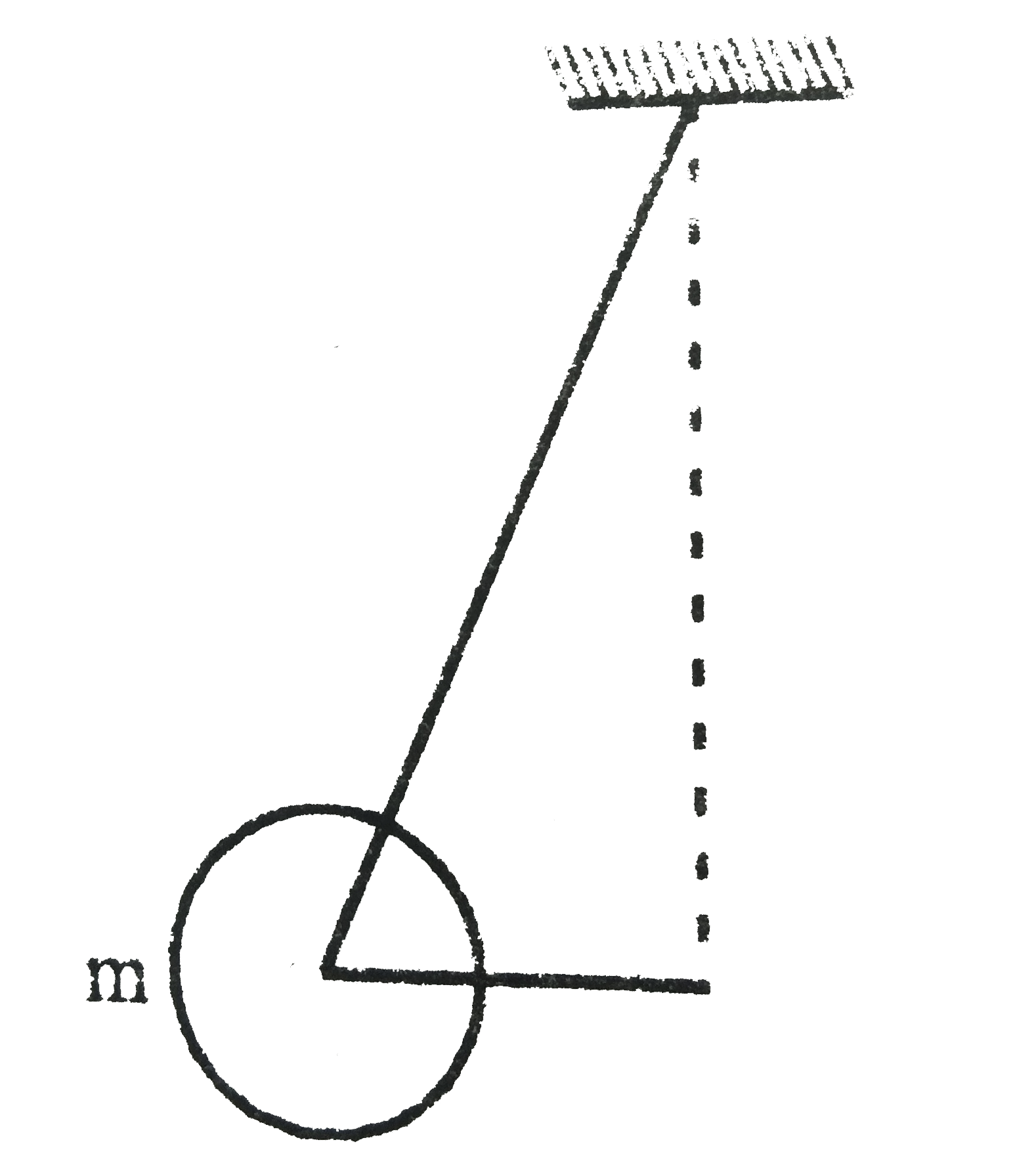If the energy, E=Gphqcr, where G is the universal gravitational constant, h is the Planck's constant and c is the velocity of light, then the values of p are q and r are, respectivelySolution in Gujrati
The correct Answer is:D
Slope from x axis
y=3+x,tanθ=1⇒θ=45∘
∴ Electric field in vector from →E=100(ˆi+ˆj√2)
∴V=−(1, 3)∫(3, 1)→E.d→r
V=−100√2⎡⎢⎣1∫3dx+3∫1dy⎤⎥⎦=50√2[−2+2]=0
Alternate solution: The direction of electric field and the slope of line A (3, 1) & (1, 3) is ⊥ to each others so the dot product →E.d→r becomes zero.
Topper's Solved these Questions
- BASIC MATHSBOOK - ALLEN CHAPTER - BASIC MATHSEXERCISE - Exercise-03
1 Videos
- BASIC MATHSBOOK - ALLEN CHAPTER - BASIC MATHSEXERCISE - Exercise-04
1 Videos
- BASIC MATHSBOOK - ALLEN CHAPTER - BASIC MATHSEXERCISE - Exersice -05(B)
20 Videos
- AIIMS 2019BOOK - ALLEN CHAPTER - AIIMS 2019EXERCISE - PHYSICS
39 Videos
- CIRCULAR MOTIONBOOK - ALLEN CHAPTER - CIRCULAR MOTIONEXERCISE - EXERCISE (J-A)
6 Videos
Similar Questions
Assertion : Light year and year, both measure time.
Reason : Because light year is the time light takes to reach the earth from the sun.
View SolutionStatement-I : If x and y are the distance along x and y axes respectively then the dimensions of d3ydx3 is M0L−2T∘
Statement-II : Dimensions of b∫aydx is M0L2T∘
View SolutionA vector of length l is turned through the angle θ about its tail. What is the change in the position vector of its head ?
View SolutionA simple pendulum executing SHM in a straight line has zero velocity at 'A' and 'B' whose distances form 'O' in the same line OAB are 'a' and 'b'. If the velocity half wat between them is 'v' then its time period is
View SolutionA ball of mass (m)0.5kg is attached to the end of a string having length (L)0.5m. The ball is rotated on a horizontal circular path about vertical axis. The maximum tension that the string can bear is 324N. The maximum possible value of angular velocity of ball (radian/s) is -
 .
.
View SolutionIf the energy, E=Gphqcr, where G is the universal gravitational constant, h is the Planck's constant and c is the velocity of light, then the values of p are q and r are, respectively
View SolutionIf the velocity of light c, gravitational constant G and Planck's constant h be taken as fundamental units the dimension of mass in the new system will be-
View SolutionIf the velocity of light (c) , gravitational constant (G) and Planck's constant (h) are chosen as fundamental units, then the dimensions of mass in new system is
View SolutionIf the constant of gravitation (G) , Planck's constant (h) and the velocity of light (c) be chosen as fundamental units. The dimension of the radius of gyration is
View SolutionThe dimensions of length are expressed as G^(x)c^(y)h^(z) , where G, c and h are the universal gravitational constant, speed of light and Planck's constant respectively, then :
View SolutionThe dimensional formula for Planck's constant h and gravitational constant G respectively is
View SolutionIf C the velocity of light,h Planck's constant and G gravitational constant are taken as fundamental quantities, then the dimensional formula of mass is
View SolutionIf the energy E=Gphqcr where G is the universal gravitational constant, h is the planck's constant and c is the velocity of light, then the values of p, q and r are respectively:
a) -1/2,1/2 and 5/2
b) 1/2, -1/2 and -5/2
c) -1/2,1/2 and 3/2
d) 1/2, -1/2 and -3/2
View SolutionIf the constant of gravitation (G), Planck's constant (h) and the velocity of light (c ) be chosen as fundamental units. What is the dimension of the raidus of gyration?
View SolutionIf the energy, E=Gphqcr, where G is the universal gravitational constant, h is the Planck's constant and c is the velocity of light, then the values of p, q and r are, respectively
View SolutionIf C the velocity of light, h planck's onstant and G Gravitational constant are taken as fundamental quantites, then the dimensional formula of mass is
View Solution
